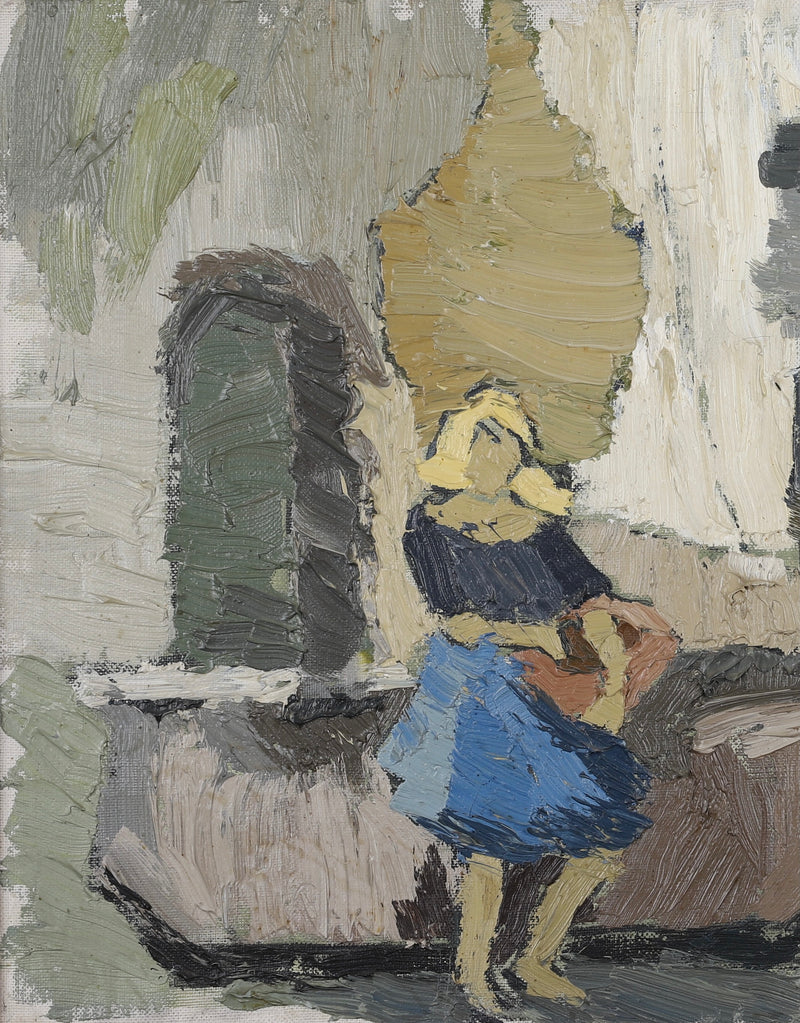Introducing the Tricks Behind Expressive Figurative Oil Painting Styles
Introducing the Tricks Behind Expressive Figurative Oil Painting Styles
Blog Article
The Function of Emotion and Expression in Figurative Oil Paint: A Thorough Analysis of Topic Matter and Composition
The interplay of emotion and expression in metaphorical oil paint serves as an essential lens via which one can check out the complex connection in between subject issue and make-up. Artists harness different methods, from shade selection to brushstroke characteristics, to grow emotional resonance within their works.
Comprehending Feeling in Art
Feeling in art acts as a powerful conduit for expression, allowing musicians to share complicated feelings with their job. In metaphorical oil paint, this emotional depth is often depicted via the representation of the human number, capturing the nuances of human experience. The choice of topic, color combination, and brushwork all add to the emotional resonance of a piece.
Artists often bring into play personal experiences, social concerns, or universal themes to evoke sensations in the customer. A picture might reflect susceptability, while a vibrant figure in movement can signify flexibility or turmoil. These emotional threads attach the customer to the artwork, fostering a dialogue that goes beyond the aesthetic medium.
Moreover, the interaction in between light and shadow can magnify psychological intensity, assisting the audience's look and accentuating certain components within the make-up. Using appearance in oil paint even more includes layers of complexity, inviting a responsive action that improves the emotional experience. Generally, understanding feeling in art is vital for valuing the nuances that identify metaphorical oil paint, as it changes plain depiction right into an extensive expedition of the human problem.
Key Elements of Composition
In the world of figurative oil painting, the composition acts as the underlying structure that arranges visual aspects and improves the psychological narrative. Essential parts of structure include balance, contrast, focal point, and rhythm, each contributing to the overall influence of the artwork.
Equilibrium describes the circulation of visual weight within the paint, which can be attained with asymmetrical or symmetrical plans. A well-balanced structure gives stability, enabling the customer to involve with the item sympathetically - figurative oil painting. Comparison, on the other hand, includes juxtaposing various elements, such as dark and light or cozy and awesome shades, to direct the visitor's eye and evoke psychological reactions
The focal factor is vital, as it guides interest to one of the most significant component of the paint, typically highlighting the psychological core of the story. Through techniques like shade saturation or positioning, artists can emphasize this area properly. Lastly, rhythm relate to the repeating of components, producing a feeling of activity and flow throughout the make-up. By skillfully integrating these crucial aspects, artists can craft engaging and emotionally resonant figurative oil paintings that mesmerize and involve their audience.
Topic Matter and Its Influence
Subject plays a critical function in figurative oil paint, as it not only functions as the structure for the narrative yet likewise forms the viewer's interpretation and psychological interaction with the artwork. The selection of subject-- be it a solitary number, a group dynamic, or a thematic depiction-- straight affects the emotional ambience conveyed to the target market.

For instance, pictures often evoke personal connections, exposing the intricacies of human expression and personality, while scenes illustrating communal activities can produce a sense of belonging or nostalgia. The social and historic context of the subject issue improves the viewer's understanding, motivating much deeper representations on societal norms, values, and the human problem.
Various subjects also produce varying degrees of engagement; a remarkable problem illustrated through numbers in stress may elicit feelings of anxiousness or empathy, while peaceful landscapes can invoke serenity and contemplation. Ultimately, the effect of subject issue in figurative oil painting is extensive, as it works as a conduit for psychological vibration, leading the customer's action and interpretation, and promoting a link in between the onlooker and the artwork. This interplay is necessary for the effective interaction of the artist's intent.
Techniques for Stimulating Sensations
The performance of figurative oil painting in communicating emotions is dramatically affected by the techniques utilized by the musician. One of the most essential approaches is making use of shade theory, where the tactical selection of shades can evoke certain emotional reactions. Warm colors, such as oranges and reds, commonly elicit feelings of interest or aggressiveness, while cooler tones like blues and greens have a tendency to evoke peace or despair.
An additional crucial strategy is the control of light check my reference and shadow, referred to as chiaroscuro. This approach enhances the three-dimensionality of numbers, producing dramatic contrasts that can heighten emotional deepness. The placement of light can guide visitors' feelings, highlighting specific components of the make-up.
Brushwork likewise plays a critical duty; loose, meaningful strokes can communicate power and spontaneity, whereas smoother strategies might suggest peace or precision. The arrangement of subjects within the make-up can affect psychological effect. Close Get the facts closeness can suggest intimacy, while distance may show seclusion.
Eventually, the combination of these techniques enables musicians to craft stories that reverberate with the audience, transforming a plain aesthetic experience right into an expressive emotional journey. - figurative oil painting

Study of Notable Functions
Checking out significant works of metaphorical oil painting discloses how numerous methods are utilized to evoke effective emotions. One excellent instance is Edvard Munch's "The Scream," where the altered number and swirling history communicate existential fear. Munch's use of color-- deep blues and vibrant oranges-- escalates the emotional impact, showcasing how scheme selections can shape viewer experience.
Another substantial job is Pablo Picasso's "Les Demoiselles d'Avignon." Here, bold brushstrokes and fragmented types show a troubled emotional landscape, testing traditional representations of the women figure. Picasso's cutting-edge structure not only records the audience's interest but also invites reflection on themes of identification and sexuality.
In Addition, Frida Kahlo's "Both Fridas" offers an emotional expedition of duality and self-identity. The contrasting numbers, connected by a common heart, exemplify Kahlo's psychological depth and individual narrative. figurative oil painting. Her careful focus to detail and symbolic elements offer to involve visitors on a visceral degree
These study highlight the profound connection between feeling and structure in metaphorical oil painting, disclosing how artists harness method to connect intricate sensations and stories that resonate across time and culture.

Conclusion
Finally, the interplay of feeling and expression in metaphorical oil paint substantially improves the audience's experience and analysis of the art work. Via a cautious choice of subject and compositional methods, artists share profound stories that resonate on both global and individual degrees. The application of shade concept, brushwork, and chiaroscuro additional enhances psychological deepness, changing each canvas into a powerful reflection of the complexities of the human experience.
In Web Site metaphorical oil paint, this psychological depth is usually portrayed through the depiction of the human number, recording the nuances of human experience.Moreover, the interaction in between light and shadow can intensify emotional strength, assisting the customer's gaze and attracting attention to specific elements within the make-up. The use of structure in oil painting further adds layers of complexity, welcoming a tactile reaction that boosts the psychological experience.The focal point is vital, as it guides interest to the most substantial component of the paint, typically highlighting the psychological core of the narrative. Inevitably, the impact of subject issue in figurative oil paint is extensive, as it offers as an avenue for psychological resonance, leading the customer's response and interpretation, and promoting a connection between the observer and the art work.
Report this page